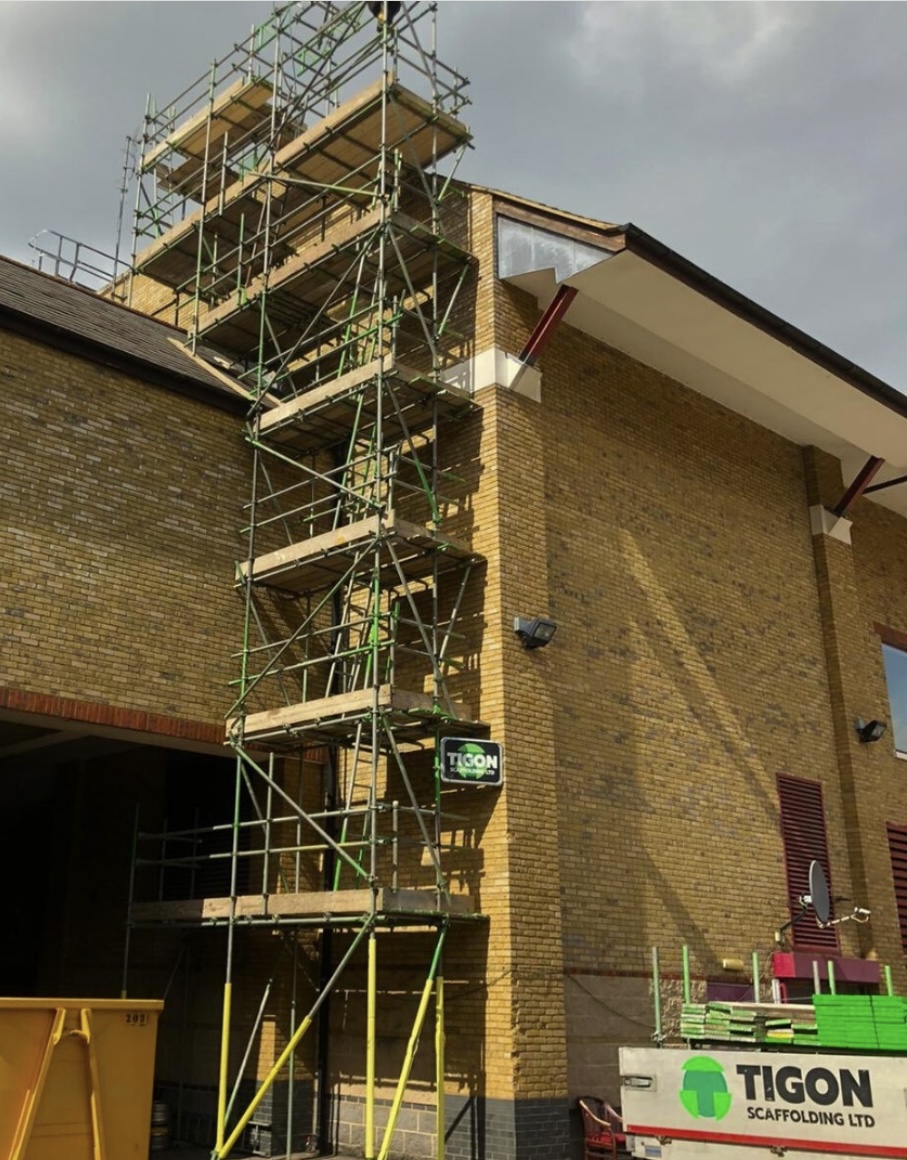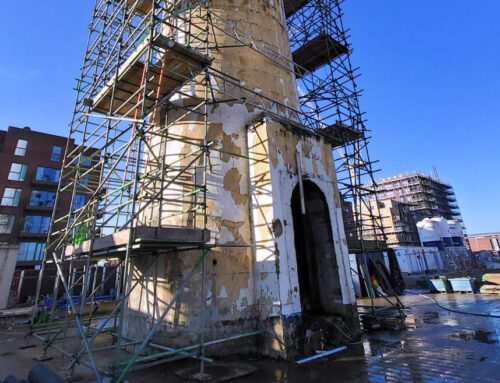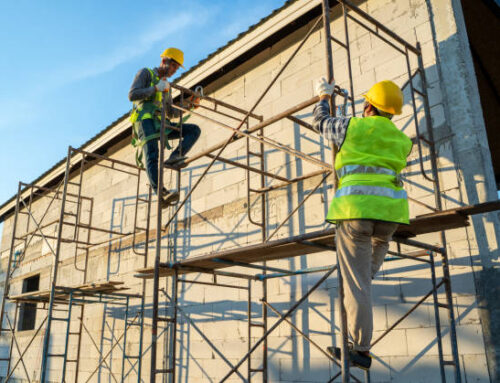How to Maintain Scaffolding During Different Seasons
Navigating the intricate balance between construction and nature isn’t always easy, the assurance of safety and stability in scaffolding is a huge priority, particularly amid the ever-shifting challenges that accompany the varied seasons. In the world of construction sites, knowing how to secure scaffolding during different seasons can be difficult, as they each have a unique set of weather conditions, demanding a nuanced approach to the safeguarding of scaffolding structures. However, once you and your team know exactly how to secure scaffolding in different seasons, your jobs will become much easier, and more importantly, safer.
Winter Scaffolding Safety
1. Vigilant Inspection:
Regular and thorough inspections of scaffolding become even more critical in winter. Freezing temperatures can impact the structural integrity of components, making it essential to identify and address potential issues promptly. Inspections should encompass not only the scaffolding structure but also the materials used, ensuring they remain resilient in cold conditions.
2. Weather Monitoring:
Stay aware of weather forecasts, particularly concerning snowfall and freezing conditions. Proactive monitoring allows construction teams to anticipate weather-related challenges and take preemptive measures. Timely adjustments to work schedules, implementation of additional safety measures, and coordination with project timelines are key aspects of navigating scaffolding successfully during winter.
3. Snow Removal Protocols:
Developing effective snow removal protocols is crucial for maintaining the load-bearing capacity of scaffolding. Clear walkways, platforms, and access points regularly to prevent the accumulation of snow and ice. Utilize appropriate tools and equipment designed for snow removal without causing damage to the scaffolding components.
4. Anti-Slip Applications:
Incorporate anti-slip measures on scaffolding platforms to minimize the risk of accidents. This may include applying specialized coatings, using anti-slip mats, or employing temporary coverings that increase traction.
5. Worker Training and Awareness:
Equip workers with the knowledge and training necessary to know how to secure scaffolding during different seasons, including winter, and educate them on the specific challenges posed by cold weather, the importance of using proper personal protective equipment (PPE), and the significance of adhering to established safety protocols.
6. Communication and Coordination:
Maintain open lines of communication among the construction team to facilitate seamless coordination during winter operations. Clear communication ensures that everyone is informed about the current weather conditions, safety measures in place, and any adjustments to work plans.
Spring Scaffolding Safety
1. Rain and Storm Preparedness:
Spring often brings increased rainfall and the potential for storms. Incorporate rain and storm preparedness measures into your scaffolding practices. This may include waterproofing materials, covering scaffolding during heavy rain, and having a plan in place to secure the structure in the event of a storm.
2. Temperature Moderation:
As temperatures gradually rise in spring, it’s essential to monitor and moderate the impact on scaffolding materials. Check for signs of expansion or contraction, and make adjustments as needed to maintain the stability and integrity of the structure.
3. Foliage Management:
With spring comes lush foliage, and while it may not pose the same challenges as autumn leaves, it’s essential to manage greenery around scaffolding. Trim branches and foliage that could interfere with the structure or create safety hazards.
4. Spring Cleaning and Inspection:
Spring is an ideal time for a comprehensive cleaning and inspection of scaffolding components. Remove any debris that may have accumulated during the winter, and conduct a thorough examination to identify any wear, rust, or damage that may have occurred.
5. Floral Allergens Consideration:
Spring brings blossoming flowers and trees, potentially leading to increased pollen in the air. Consider workers who may have allergies and provide necessary accommodations. This might include allowing more frequent breaks or providing personal protective equipment to minimize exposure.
6. Daylight Extension:
As days lengthen in spring, take advantage of extended daylight hours for scaffolding work. Plan tasks to maximize natural light, enhancing visibility and reducing the reliance on artificial lighting during daytime operations.
7. Planning for Growth:
Consider the potential growth of plants and trees around scaffolding structures. Plan for ongoing foliage management throughout the spring to ensure it doesn’t interfere with the stability or safety of the scaffolding.
Summer Scaffolding Safety
1. Heat Management:
Implementing proactive measures such as shading materials with protective coverings can help minimize the direct heat on these elements, ensuring their structural integrity and longevity even in the face of scorching temperatures, as well as not being as hot to touch.
2. Hydration and Sun Protection:
Amid the summer’s sweltering conditions, safeguarding the well-being of workers takes precedence. Construction teams should not only provide shaded areas for breaks but also encourage frequent water consumption, as well as encourage the use of appropriate equipment, including hats and sunscreen.
3. Storm Preparedness:
Summer often brings the possibility of sudden storms, including heavy rain and strong winds. Have a storm preparedness plan in place, secure loose items on scaffolding platforms, and temporarily halt work during adverse weather conditions to ensure the safety of workers and the stability of the scaffolding structure.
4. Early Morning and Late Afternoon Work:
Given the intensity of midday heat during the summer, a strategic approach involves scheduling tasks related to scaffolding work during the cooler periods of the day—either early morning or late afternoon. This thoughtful scheduling not only enhances the overall comfort of workers in the challenging heat but also minimizes the potential for heat-related issues. Moreover, it ensures better concentration on safety measures, contributing to a more secure and productive working environment during the hottest times of the day.
5. Insulation and Ventilation:
Prioritizing insulation and ventilation is key, where airflow not only dissipates heat but also fosters a more comfortable environment for workers. In this context, the consideration of employing reflective materials adds a layer of efficacy, minimizing heat absorption and elevating the overall insulation on scaffolding structures. These strategies show a commitment to creating a workspace that not only addresses how to secure scaffolding during different seasons but also enhances the overall well-being and productivity of the construction team.
6. Regular Inspections:
As scaffolding structures face prolonged use and potential wear throughout the summer, prioritizing their maintenance becomes paramount. Regular inspections serve as a proactive measure, enabling the timely identification of any signs of fatigue, stress, or damage.
7. Emergency Response Planning:
Ensure that the construction team is well-versed in emergency response procedures, especially during extreme heat events. Establish protocols for identifying signs of heat-related illnesses, and have designated areas equipped with first aid supplies for immediate assistance.
Autumn Scaffolding Safety
1. Foliage Management:
One of the primary challenges in autumn is the accumulation of fallen leaves on scaffolding platforms. Regularly clear leaves to prevent slipping hazards and ensure proper drainage. Consider using leaf blowers or other suitable tools for efficient foliage management.
2. Weather Variability:
Autumn brings fluctuations in temperature and occasional storms. Stay informed about weather forecasts to anticipate sudden changes. Secure loose items on scaffolding, and be prepared to adjust work schedules or take temporary safety measures in response to adverse weather conditions.
3. Scaffolding Stability Checks:
As temperatures begin to drop, perform additional stability checks on scaffolding components. Cold weather can affect the materials, and thorough inspections help identify any issues that may compromise the integrity of the structure. Pay attention to connections, joints, and the overall stability of the scaffolding system.
4. Slip Prevention Measures:
Similar to winter precautions, implement anti-slip measures on scaffolding platforms. This may include applying coatings, using anti-slip mats, or incorporating temporary coverings. These measures help maintain traction and prevent accidents, especially when surfaces may become damp or slippery due to rain or dew.
5. Worker Training for Autumn Conditions:
Educate workers about the specific challenges posed by autumn conditions. Emphasize the importance of proper footwear, adherence to safety protocols, and vigilance when working on or around scaffolding. Encourage a culture of safety awareness to mitigate potential risks.
6. Coordination for Seasonal Changes:
Coordinate with the construction team to address the seasonal transition and how to maintain scaffolding during different seasons. Discuss any adjustments needed in work procedures, timelines, or safety protocols. Effective communication ensures that everyone is on the same page about how to secure scaffolding during different seasons.
7. Lighting Considerations:
With shorter daylight hours in autumn, consider the impact on visibility. Ensure adequate lighting on and around scaffolding structures, especially during early mornings or late afternoons. Proper illumination enhances safety and reduces the risk of accidents.
8. Material Protection:
Protect scaffolding materials from the potential effects of autumn weather, such as dampness and temperature variations. Utilize weather-resistant covers or storage solutions to prevent deterioration and maintain the longevity of scaffolding components.














